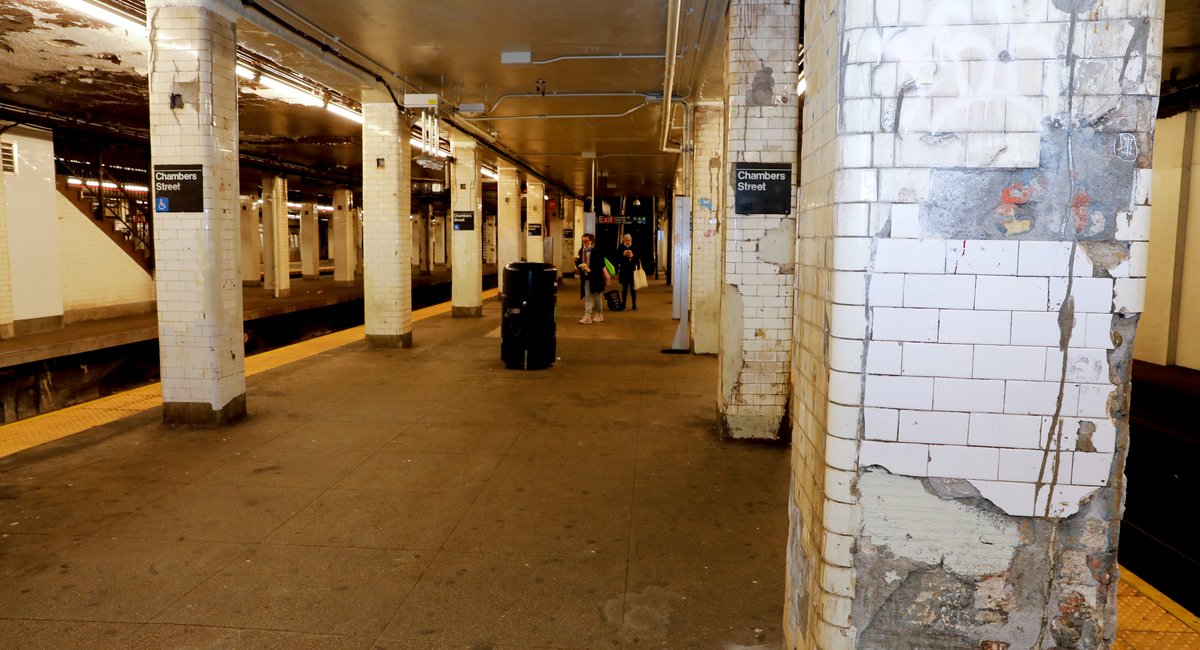The MTA on Wednesday released an ambitious $65.4 billion plan to keep New York’s mass transit system from falling into disrepair — but agency officials said they still need Gov. Kathy Hochul and other lawmakers to find new money to cover more than half of its cost.
The proposed capital plan, which would run from 2025 to 2029, doesn’t center on new rail lines, but instead on work to simply keep the city’s creaky old subway and bus systems up and running.
“There are assets within this system that are in real danger of failure,” Jamie Torres-Springer, the MTA’s president of construction and development, said at a press briefing Tuesday.
The release of the plan — and the MTA’s dire warning — come as Hochul’s order to halt congestion pricing in June leaves a $16.5 billion funding hole in the agency’s current capital plan, which runs from 2020 to 2024. The money from the proposed Manhattan tolls were required by law to finance mass transit upgrades, and the governor has not announced how she plans to replace the money.
The MTA said it’s identified some funding sources for its next capital plan, like federal subsidies and bonds. But the agency’s Chief Financial Officer Kevin Willens on Tuesday said the plan has a funding shortfall of at least $33 billion. That means Hochul and state lawmakers have to find upwards of $48 billion for the MTA when they return to Albany next year, or else the agency will have to scale back its work.
“We take them at their word that they will be addressing that funding in one way or another at the appropriate time,” said Torres-Springer. “[Legislative leaders] have also been clear and the governor has also been clear their intention to fully fund the MTA’s capital needs in the next five-year plan.”
Torres-Springer noted about a quarter of the agency’s 8,000 train cars are “beyond their useful life” and train breakdowns are “one of the things that cause those cascading delays that cause a significant issue.”
She said she hopes to spend $10.9 billion on new trains, the top expenditure in the plan. That would buy 1,500 modern subway cars to replace some of the oldest in the fleet that date back to the 1980s. Officials said old cars run about 40,000 miles before having a breakdown, compared to the MTA’s newest A trains, the R211s, that can run 200,000 miles before having an issue.
The MTA also plans to order 500 new commuter railroad train cars to replace the ones brought back into service to run at the recently opened Grand Central Madison terminal that are 40 years old and have seats that are held together by duct tape.
While the agency earlier this summer stopped work on adding elevators to 23 subway stations due to Hochul’s congestion pricing pause, the agency plans to make accessibility upgrades to at least 60 more subway stations through the new plan.
If all of those projects are completed, half of the city’s subway stations would be accessible. That would help keep the agency on track to meet its legal requirement of making 95% of the system accessible by 2055.
The plan also focuses on much less visible parts of the subway, like upgrading its aging electric system. It also targets repairs for the MTA’s train depots where subway cars are maintained: many of them have crumbling roofs.
One project included in the plan that would be highly visible to the public is a pitch to spend $1.1 billion on new fare gates, which would be rolled out at 150 of the city’s 472 subway stations. MTA planning documents note the new gates would “reduce fare evasion and improve accessibility.” MTA renderings show new gates with tall glass doors and no device for swiping a MetroCard — only an OMNY reader.
The documents note the agency loses $300 million a year to subway fare evasion, and that half of the people who enter without paying use the exit gate. It’s not clear how new fare gates will address this.
The plan for the new fare gates comes days after police officers opened fire on an alleged fare beater in Brooklyn, injuring bystanders and another officer.
One of Hochul’s pet projects, the Interborough Express (IBX) line that would connect Brooklyn and Queens with a light rail train line running on mostly existing tracks, would get $2.75 billion through the plan. Officials said that would cover about half the cost of the project and would allow it to fully design the IBX and complete the necessary environmental reviews needed to begin construction.
The MTA also plans to upgrade subway signal systems — which are nearly a century old in some places — on stretches of the N, Q, R, W and J lines — as well as the elevated lines in the Rockaways. The signal work would also address two Brooklyn subway bottlenecks in Crown Heights and the foot of the Manhattan bridge, officials said.
Still, lawmakers can’t move ahead with roughly half the projects in the plan until lawmakers come through with the $33 billion MTA leaders have asked for.
“We will review the MTA’s proposal for the upcoming 5-year capital plan and fight to secure as much funding as possible,” Hochul said in a statement. “That includes pressuring Washington to deliver additional infrastructure dollars and working with our partners in the Legislature and City Hall to determine priorities and capacity during the upcoming budget negotiations.”
